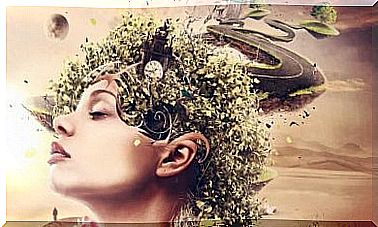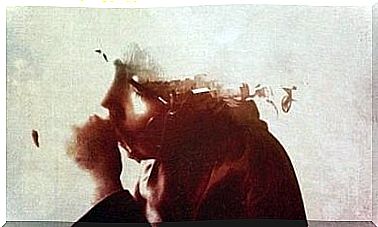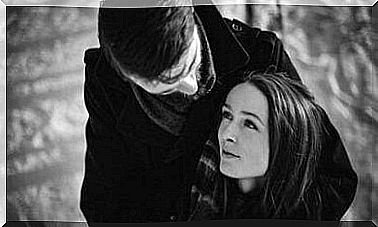Why Is Little Red Riding Hood’s Wolf Not Mean?
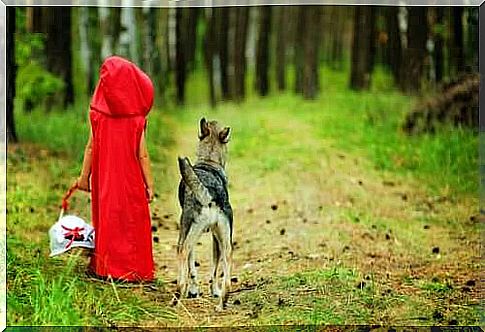
Society traps us with its frantic pace; and as you will see, the example of the wolf in Little Red Riding Hood proves it. It keeps us from thinking about what we are doing and what we are saying to our children. How many times have we heard this sentence or a similar sentence? : “Leo, you’re naughty, you don’t hit your sister”. Does that mean anything to you? For many of us, this is a very familiar phrase. I’ve heard it countless times and sometimes I’ve even said it. But what are we doing?
It seems that Leo’s attitude is not very suitable, but calling him a villain is not adequate either. To understand our error, it is very important to be able to distinguish the act in itself, the behavior of the child, and the child. It is essential to know the difference between an act and a person and to pay close attention to the labels.

The danger of labels
If Leo’s father told him that, it’s because his act is reprehensible and his behavior is inappropriate. However, it is the behavior of the child that is objectionable and incorrect, not the child. If we systematically confuse the behaviors and actions of our children with their person, we can end up undermining little by little (and unconsciously) their self-esteem. Saying “you are lost” (personality variable) and “you got lost” (behavior) are not the same thing.
For this reason, I have always been surprised to hear children say that Little Red Riding Hood’s wolf is mean. He is credited with this personality characteristic (“he’s mean”) because he wanted to eat the Hood.
The conclusion is simple: if he wants to eat it, it’s because he’s mean. Only the bad guys do this stuff.
There are many tales with wolves ( Little Red Riding Hood, the Three Little Pigs, The Wolf and the Seven Kids, The Boy Who Cried Wolf , etc.). In each tale, the wolf wishes to harm the main characters. For this reason, he remained with the villain tag. The reality is not this.
The wolf is not bad. The wolf wants to eat Little Red Riding Hood because he’s hungry, not because he’s mean. If we give this explanation to our children, they will be able to have more realistic, healthier and positive expectations. Poor wolves, the bad image they have! We absolutely have to change the attributions that we make.
The art of discovering behavior
Luis Cencillo, philosopher and psychologist, often used a concept that seems very practical to me: resemantization . Resemantization consists of changing an attribution for a more suitable one. For example, instead of saying that a child is very weird and elusive, we can resemantize and say that the child is shy (we give them another label).
It’s very difficult to remove a tag once it’s assigned, isn’t it? Very difficult. As psychologist Alberto Soler puts it so well, labels are very easy to give but difficult to remove.
To illustrate this, Soler uses the image of the labels stuck on the canning jars. Once we have tagged a child (stressed, mean, smart, helpful, worried, etc.) it will be very difficult to remove it unless the evidence allows. For this reason, pay attention to the labels you assign.
The human being generally acts according to the labels and the judgments emitted. Often we accept labels. Henry Ford said “Whether you think you can do it or think you can’t do it, you’re right”.
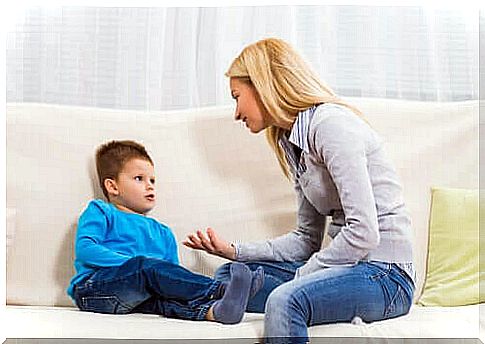
The impact of labels
To illustrate the consequences of labels on humans, I often refer to a classic story: that of Galton . Francis Galton was Charles Darwin’s cousin. One morning, he decided to enter a park believing he was the worst person on Earth. He didn’t speak with anyone, he only thought he was a dastardly being. What did Galton observe in the people he met? The majority of the people he passed were moving away from him, observing him with a frightened gaze. Isn’t that surprising? This is the power of labels.
Let us return to the image of the wolf who is not bad. Just as the wolf is not bad, I am convinced that there is no such thing as a bad child. It is very common to hear “ Marion is very mean .” But behind bad behavior there is always a reason that must be listened to and satisfied.
We must not accept the behavior (and far from it), but understand why the child usually behaves this way. For this, the best thing to do with your children or students is certainly to describe the behaviors rather than to classify them.
Let us be careful of the explanations and labels we give to our children and their consequences. Your view of things can make their view more flexible, healthier, and more responsive.






